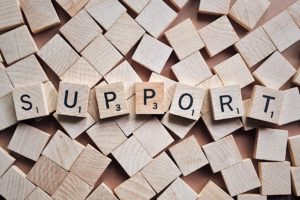Diane Chadwick-Jones, Director at Guildstone Advisory Services Ltd examines blame culture in the workplace and a positive alternative…

Diane Chadwick-Jones, Director at Guildstone Advisory Services Ltd
It’s easy to blame frontline workers when things don’t go to plan since they are the most visible part of a workplace system that has complex interactions that generate difficult-to-see risks.
Blame gives a focus on individuals and discipline, diverting attention from looking at how the task needed to be done in practice and what made sense to people at the time.
We wonder why we have repeat incidents, or why a severe incident comes out of the blue, often at what we thought was our safest site. The reason may be that blame has prevented speaking up and learning, obscuring the details that would enable us to improve the risk profile of the work.
No amount of telling people to follow the rules will improve issues with procedures, resourcing, or equipment. Nor will these workplace problems be remedied by frontline engagement programs asking workers to make safe choices.
There will always be a difference between the task design and the reality of work on the day. Despite the challenges that workers face, they struggle on and do the best they can under the circumstances.
The concept of a Just Culture arose in the aviation industry in the 1950s-1970s, with the enabling of reporting and discussion of issues to improve safety, and to hold off from discipline until the workplace context was understood.
Of course, many of us think we do this, but we ask who is accountable and punish people who make mistakes. We often consider incidents from a “who caused the problem?” point of view, rather than asking “what went wrong?”. This limits our ability to discover the situations that led to the mistake or incident, since we stop investigating when we identify the so-called culprit.
What is the purpose of a Just Culture? Its core mission IS learning
 James Reason created a Just Culture decision tree to try to bring a fairer perspective to learning but, even then, it contained priming language that led to an emphasis on judgement of the intentions of the individual, for example the words “reckless” and “negligent”.
James Reason created a Just Culture decision tree to try to bring a fairer perspective to learning but, even then, it contained priming language that led to an emphasis on judgement of the intentions of the individual, for example the words “reckless” and “negligent”.
A large energy company recognised this limitation and decided to redesign the Just Culture process with practical expertise from incident investigators combined with business feedback and external research. It became a set of questions, no longer a flow chart, to observe the drivers for actions when there were non-conformances or mistakes:
- Was the individual instructed/influenced to do this by supervision or other figures of authority?
- Was the expectation clear? If there was a procedure, was it clear, available, current, and workable?
- Did they understand what was required and did they have the knowledge, experience, skill, physical capacity and resources to do it?
- Did they intend to act in line with company expectations, but made a mistake?
- Were they following custom-and-practice which was common amongst their peers?
- Substitution test: could another person with the same knowledge, skill and experience have done the same thing in the identical situation?
- Is there evidence to suggest that they acted to help self or company to save time or effort?
- Is there evidence to suggest they intended to cause harm, damage or loss?
A database was established to document Just Culture reviews and examine potential trends. It was seen that most adverse events were caused by problems with procedures, lack of resources or training, and the workplace setup being confusing.
This contradicts traditional thinking that the majority of accidents are caused by human failure, and shows that error and actions not in-line with expectations are the outcomes of organisational weaknesses and are workplace-induced.
The data was used to help shift the mindset in the energy company towards more specific expectations regarding organisational learning.
Leaders asked more questions about underlying contributory factors to issues and took various actions to further encourage reporting of difficulties, including responding supportively when concerns were raised. To build trust, it was essential for leaders to communicate the Just Culture results to the workforce, demonstrating that disciplinary measures were not used in the vast majority of cases, and that constructive actions were taken to address the systemic conditions.
How do we generate an epiphany to replace blame in organisations so that the frontline feel listened to when they report mistakes, or difficulties in following procedures?
 You may be wondering how to build skills in leaders to move forward from saying “who is accountable, who should we punish?” to saying “we have good people, lets find out about what influenced their actions”.
You may be wondering how to build skills in leaders to move forward from saying “who is accountable, who should we punish?” to saying “we have good people, lets find out about what influenced their actions”.
I would not recommend creating a Just Culture process, since this could create additional bureaucracy in the organisation. Although, if you already have a Just Culture flow chart, it would be worth examining how it is used and consider an update.
You may not have the internal company data for evidence that frontline actions do not generate incidents, but fortunately the energy company example has been published and you can use that information to give credibility to influencing change, with the link to the paper here: From individual behaviour to system weaknesses: The re-design of the Just Culture process in an international energy company.
Building upon this evidence, three focus areas are suggested to enable a speak-up culture where the frontline feel encouraged to raise concerns:
 Responding supportively to bad news by saying “how can I help?”. This skill can be fostered by explaining the complexity of incident causation, where many different weaknesses and error-producing conditions combine for an incident to occur.
Responding supportively to bad news by saying “how can I help?”. This skill can be fostered by explaining the complexity of incident causation, where many different weaknesses and error-producing conditions combine for an incident to occur.- Learning from everyday work to make visible the difficult-to-see risks by asking about what is making the work difficult, what issues have happened in the past, and what would trip up someone new to this task?
- Updating the questions asked in incident or near miss investigations to include stronger attention to the contexts that influence behaviours.
Your organisation may worry that you are going ‘soft’ by moving away from disciplining the frontline, but at the same time will be frustrated with repeat incidents, and questioning what could be done differently.
This is a credible way forward to better reveal the reality of risk in the organisation to enable learning and incident prevention.
The Safety Conversation Podcast: Listen now!
The Safety Conversation with SHP (previously the Safety and Health Podcast) aims to bring you the latest news, insights and legislation updates in the form of interviews, discussions and panel debates from leading figures within the profession.
Find us on Apple Podcasts, Spotify and Google Podcasts, subscribe and join the conversation today!


 James Reason created a Just Culture decision tree to try to bring a fairer perspective to learning but, even then, it contained priming language that led to an emphasis on judgement of the intentions of the individual, for example the words “reckless” and “negligent”.
James Reason created a Just Culture decision tree to try to bring a fairer perspective to learning but, even then, it contained priming language that led to an emphasis on judgement of the intentions of the individual, for example the words “reckless” and “negligent”. You may be wondering how to build skills in leaders to move forward from saying “who is accountable, who should we punish?” to saying “we have good people, lets find out about what influenced their actions”.
You may be wondering how to build skills in leaders to move forward from saying “who is accountable, who should we punish?” to saying “we have good people, lets find out about what influenced their actions”. Responding supportively to bad news by saying “how can I help?”. This skill can be fostered by explaining the complexity of incident causation, where many different weaknesses and error-producing conditions combine for an incident to occur.
Responding supportively to bad news by saying “how can I help?”. This skill can be fostered by explaining the complexity of incident causation, where many different weaknesses and error-producing conditions combine for an incident to occur.